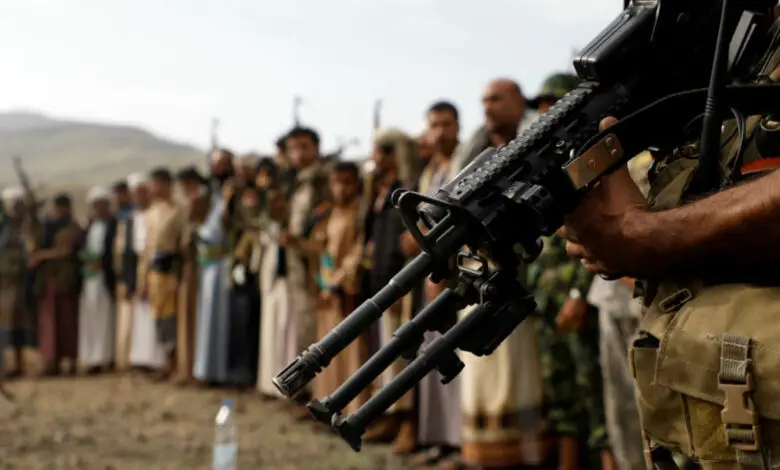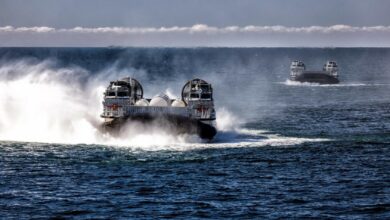
The US Navy has effectively lost control of the Red Sea because the current American way of war involving missiles and drones launched from remote locations has its limitations.
Complete air supremacy does not equate to victory on the ground or at sea, and our enemies quickly figure out our political and moral limitations.
Vietnam is a good example.
By the early 1970s, the US had nearly complete air supremacy over North Vietnam. However, because the North Vietnamese embedded critical military infrastructure among civilians, American air strikes only made minimal strategic difference. In a time of domestic dissidence, the US could not decisively impact the war with air power alone.
Amphibious Raid
In 1972, I was a Marine Corps Second Lieutenant. I wrote an article for the Marine Corps Gazette suggesting we could break the stalemate with a massive amphibious raid into North Vietnam.
I proposed a 60 to 90-day incursion that would destroy their standing army, military infrastructure, and ports. I advocated a sea-based option because the Vietnamese insurgents would be less likely to disrupt our lines of communications and would never know where we would strike next.
It was the Cold War, and most American policymakers feared a large-scale incursion would bring intervention by the Soviet Union or China. I argued that by the time either of those could effectively intervene the Marines would be gone and that it would take Hanoi years before it would be able to launch a successful invasion of South Vietnam.
I believed this would give the South time to build an effective, productive, and Western-oriented democracy such as South Korea was becoming.
Not surprisingly, the administration was unwilling to take strategic advice from a Second Lieutenant and the country’s mood would not have supported major military action. By 1975, South Vietnam had collapsed under a Northern invasion.
Many Americans who did not live through that period (and some who did) believe Saigon fell to Viet Cong peasants armed only with AK-47s and rocket-propelled grenades. In actuality, the South was overrun by a modern combined arms North Vietnamese army using tanks, artillery, and Soviet-built anti-aircraft missiles — exactly the army that my concept would have killed in the cradle.
It would have worked then, and it would work now in Yemen if we still had the Navy and Marine Corps to accomplish it.

Lacking Capabilities
For a smart opponent, hiding missile and drone launchers in civilian areas is an effective strategy when we limit ourselves to attacks by air. It gets much harder when units are on the ground and capable of hunting down the sites without killing civilians.
In the early 1970s, the US Navy was capable of landing two full Marine Corps divisions armed with tanks and the bridging capability to cross any river in Vietnam while destroying its entire capability to project power into the South.
Today, the Navy would be hard-pressed to land a single Marine Expeditionary Brigade. The Marine Corps no longer has tanks or the assault bridging and breaching capability to project and sustain military operations much beyond a narrow beachhead.
The Marines did this to themselves under the direction of a commandant who misinterpreted the emerging nature of war, and the Navy went along with it.
‘Send in the Marines’
There should be a lesson here for the Biden administration. If things continue the way they are, the only way the Houthi missile and drone threat in the Red Sea can be halted is if the Iranians can convince their surrogates to stop.
The US Navy has not reached that level of humiliation since the early days of the war on the Barbary pirates in the 19th century. The US Navy/Marine Corps power projection capability is at its lowest since December 7, 1941.
This is the second time in the last four years that we have had to hope that our enemies would get us out of a situation that we ourselves created through our own ineptitude.
When America used to get itself in difficulty overseas, presidents could say “send in the Marines.” Biden has been reduced to sending in the Iranians… or appealing to the Taliban.
 Gary Anderson served as the Chief of Plans (G-5) of the Marine Corps Expeditionary Force responsible for the Indo-Pacific area.
Gary Anderson served as the Chief of Plans (G-5) of the Marine Corps Expeditionary Force responsible for the Indo-Pacific area.
He lectures on Alternative Analysis at the George Washington University’s Elliott School of International Affairs.
The views and opinions expressed here are those of the author and do not necessarily reflect the editorial position of The Defense Post.
The Defense Post aims to publish a wide range of high-quality opinion and analysis from a diverse array of people – do you want to send us yours? Click here to submit an op-ed.











